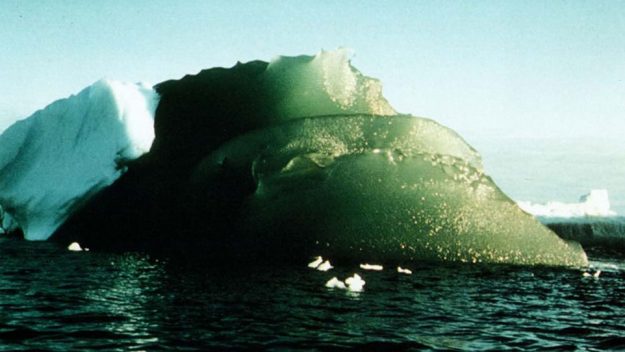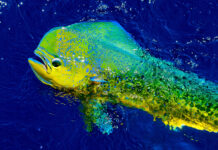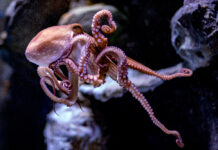Most icebergs appear white or blue when floating in seawater, but since the early 1900s explorers and sailors have reported seeing peculiar green icebergs in certain parts of Antarctica.
The strange green icebergs have always baffled scientists, but now a new study suggests iron oxides in rock dust from Antarctica’s mainland are turning some icebergs green.
According to the study published in the Journal of Geophysical Research: Oceans, marine ice varies in color due to the “abundance of foreign constituents in the seawater,” particularly iron-oxide materials. Researchers formulated the theory after they detected “large amounts of iron” during a 2016 research trip to the Amery Ice Shelf in East Antarctica.
“Previously, dissolved organic carbon (DOC) had been proposed to be responsible for the green color,” authors Stephen Warren, Collin Roesler, Richard Brandt, and Mark Curran explained in the paper. “Subsequent measurements of low DOC values in green icebergs, together with the recent finding of large concentrations of iron in marine ice from the Amery Ice Shelf, suggest that the color of green icebergs is caused more by iron‐oxide minerals than by DOC.”
Iron is a key nutrient for phytoplankton, microscopic plants that form the base of the marine food web. But iron is scarce in many areas of the ocean. If the researchers’ theory is confirmed, it would mean green icebergs are ferrying precious iron from Antarctica’s mainland to the open sea when they break off, providing this key nutrient to the organisms that support nearly all marine life.
“It’s like taking a package to the post office,” Warren, a glaciologist at the University of Washington and lead author of the study, said in a statement. “The iceberg can deliver this iron out into the ocean far away, and then melt and deliver it to the phytoplankton that can use it as a nutrient.”
Warren had been studying the green iceberg phenomenon since 1988. He analyzed samples taken from a green iceberg near the Amery Ice Shelf and found they were not made from regular glacier ice, but from marine ice, which is ocean water frozen to the underside of an overhanging ice shelf.
When an oceanographer testing an ice core from Amery Ice Shelf found marine ice near the bottom of the core had nearly 500 times more iron than the glacial ice above, Warren began to suspect iron oxides in the marine ice could be turning blue ice green.
Warren believes iron oxides in “glacial flour,” a powder created when glaciers grind against bedrock, from rocks on Antarctica’s mainland are responsible for creating the stunning emerald icebergs. He now wants to to sample icebergs of different colors for their iron content and light-reflecting properties (icebergs are usually blue in color, because the ice absorbs more red light than blue light).
If their theory proves correct, green icebergs could be more important than scientists thought.








